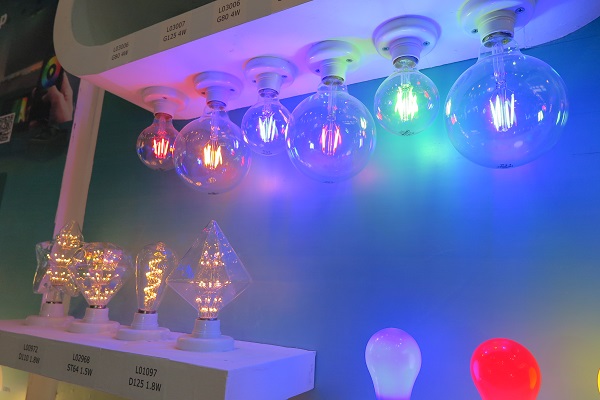Retro LED filament bulbs are trending from New York to London and installed at locations from retro bars, vogue restaurants, to households as intricate decorative lighting. Their appearances look similar to traditional incandescent lamps, but their light is softer. LED filament bulbs are not only used for decoration, but they also save energy and reduce carbon emission.
 |
|
(Image: LEDinside) |
LED manufacturers discovered that LED filament bulbs emit warmer, softer and more natural light. This is what the first generation LED cannot achieve. Kristof Vermeersch, Global Product Manager of LED at Philips Lighting, expressed that people are looking for warm light like this, close to the light from incandescent lamps.
Because LED's lifespan ranges from 10 to 15 years and it does not need frequent maintenance or replacement, LED filament bulbs might generate more sales for the LED industry in the short term.
Tom Rowlands-Rees, an analyst at Bloomberg New Energy Finance, expressed that the biggest problem of LED is longevity. LED lamp take too long to die. In other words, LED manufacturers cannot make money fast by expecting frequent purchases from customers.
However, Rowlands-Rees said that LED industry has gradually figured out a way. In order to increase profits, the industry will change people's purchasing behavior, from focusing on needs to wants.
LED filament lamps were invented by Ushio Inc. in 2008. However, at the beginning, it did not gain wide acceptance because of high price, low power, and heat dissipation issue. It was not until two years ago that LED filament lamps started taking off. As the technologies progressed and prices fell, Philip Lighting and GE Lighting began to manufacture LED filament lamps.
In 2014, the market scale of LED filament lamps was still small. It merely focused on several North European countries. However, according to LEDinside, the LED filament lamp shipment has been steadily rising in recent days and its market value might reach USD 1.8-2 billion by 2020.
Some governments have prohibited incandescent lamps while many people still prefer the soft light traditional incandescent lamps bring. According to a public opinion poll of YouGov in 2016, one-third of UK people who supported Brexit expressed that they hoped to be free from EU’s policy to ban incandescent lamps. A LED filament lamp can provide a lighting effect as soft as that of a traditional incandescent lamp and therefore become the best alternative.
There are still about 7 billion incandescent lamps being used worldwide. The development of LED filament lamps can accelerate the replacement of traditional lamps. According to the United Nations, underdeveloped countries will get more electricity in the next two decades. The demand for lighting in those countries will increase by 50%. If traditional lighting is replaced by more energy-efficient LED lighting, this change alone can offset some of the demands for new lighting. In other words, 390 tons of carbon dioxide emission can be reduced every year.
[Editor's Note: A correction was made at 02:16 pm, January 22th 2018. LEDinside team would like to apologize for the confusion. The market value of LED filament is projected to hit USD 1.8-2 billion by 2020. ]





 CN
TW
EN
CN
TW
EN




